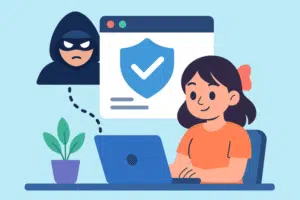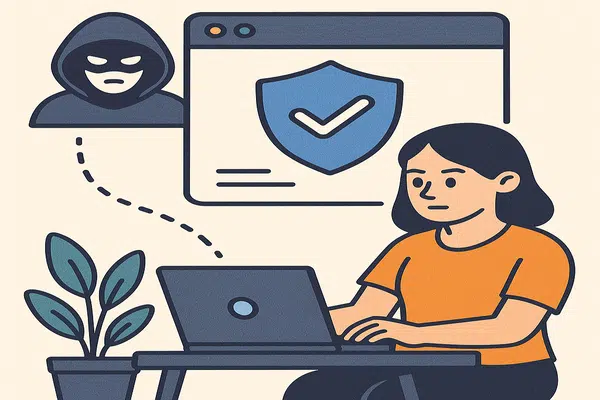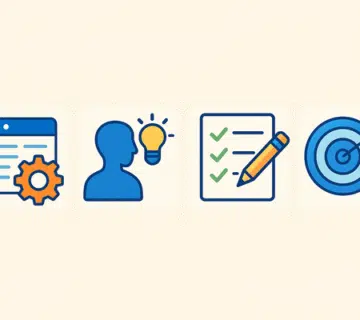Securing Your Website Against Hacks
The Importance of Website Security
Securing websites has become critically important in the modern technological era, due to the continuous rise in cyber threats targeting companies and institutions.
One of the most prominent risks is website breaches, which can lead to the loss of sensitive data and cause severe damage to a business’s reputation. When hackers gain access to a site’s security systems, they can leak customers’ personal information, such as credit card data or health records—generating concern and eroding trust in the brand.
It’s not just financial loss that should concern you—these attacks also have psychological effects. A breached website can have negative repercussions on the trust customers place in a company. Often, such incidents result in customer loss and long-term brand distrust. In a fast-paced and ever-changing world, maintaining a good reputation is a top priority for any successful business.
Another critical aspect is the legal impact. In many countries, laws prohibit the mishandling of unprotected personal data, which can expose organizations to fines and legal penalties.
Therefore, investing in security measures such as firewalls and encryption to protect sensitive data is essential—not only to maintain trust but also to comply with legal regulations.
Neglecting website security can lead to serious consequences. It’s crucial to take proactive steps to ensure safety. By investing in strong security strategies, companies position themselves to face ongoing threats and achieve sustainable success in the digital business world.

How to Secure Your Website
Securing your website is a fundamental step in protecting data and information from growing cyberattacks. There are various methods and tools available for website security, and it’s important to choose the right ones.
One of the most effective methods is using security certificates such as HTTPS, which encrypts data exchanged between users and the website—significantly reducing the risk of information breaches.
Moreover, website owners should prioritize regular software updates. System and software updates are crucial as they often include patches for bugs and security vulnerabilities that hackers might exploit.
Thus, it’s important to ensure that all software—including content management systems and plugins—is updated with the latest and most secure versions.
Additionally, using firewalls is a highly effective way to secure your site. Firewalls analyze data traffic and prevent unauthorized access, which helps protect the website from attacks.
It’s also worth noting that properly configuring firewalls requires technical knowledge, so it’s recommended to consult experts when necessary.
Don’t overlook the importance of strong passwords. Use complex passwords that include a variety of characters, numbers, and special symbols.
It’s also advisable to implement a user access management system to define different access levels for each user. These simple steps can significantly enhance your website’s security and reduce risk.
Ensuring Ongoing Website Security
Securing your website isn’t a one-time task—it’s an ongoing process that requires constant attention to ensure continuous protection. After implementing initial security measures, it becomes essential to perform regular audits to assess security levels and identify any new vulnerabilities.
These regular checks form a core part of a comprehensive website security strategy, enabling the identification and resolution of potential weaknesses.
Additionally, regular security testing—such as network penetration tests and security assessments—should be conducted. These tests simulate cyberattacks to evaluate how well the website can withstand threats. Through such evaluations, vulnerabilities can be detected, and appropriate actions can be taken to strengthen security.
Furthermore, it is important to have detailed contingency plans in case of a breach. These plans should include clear protocols for handling incidents, such as how to recover lost data and inform affected users.
Websites should also be kept up to date by applying security patches regularly. Developers frequently release updates to fix bugs and address known vulnerabilities.
Failing to apply these updates poses serious risks, as hackers can exploit outdated software. Therefore, it’s advisable to monitor software updates and apply them promptly to ensure your site stays protected with the latest security technologies—enhancing long-term safety.

Protection Against DDoS Attacks
Distributed Denial of Service (DDoS) attacks are among the most significant threats facing websites in the digital age. These attacks occur when attackers use a large number of systems to flood a targeted website with traffic, overwhelming its ability to handle legitimate requests.
To combat such attacks, websites must implement effective defense strategies.
The first step in protecting against DDoS attacks is early detection. Continuous monitoring tools must be in place to track traffic patterns and identify suspicious activities.
Behavioral analysis solutions are particularly effective at detecting unusual patterns, enabling site administrators to take action before the attack escalates.
Moreover, websites should strengthen their infrastructure to withstand DDoS pressure. This can be achieved using Content Delivery Network (CDN) technology, which balances loads by distributing traffic across multiple points, reducing the strain on the main server.
Specialized protection services can also be adopted, offering smart filters that analyze and inspect incoming requests.
It’s equally important to have clear response plans for when attacks occur. Technical teams should work to improve security protocols and train support staff on how to respond during such incidents.
By implementing these measures, websites can improve their resilience against DDoS attacks and protect their data and users. Ultimately, relying on a combination of technological and human strategies is vital to keeping your website safe from increasing cyber threats.







No comment